Accept all cookies Accept only essential cookies See our Cookie Notice

About ESA
The European Space Agency (ESA) is Europe’s gateway to space. Its mission is to shape the development of Europe’s space capability and ensure that investment in space continues to deliver benefits to the citizens of Europe and the world.
Highlights
ESA - United space in Europe
This is ESA ESA facts Member States & Cooperating States Funding Director General Top management For Member State Delegations European vision European Space Policy ESA & EU Space Councils Responsibility & Sustainability Annual Report Calendar of meetings Corporate newsEstablishments & sites
ESA Headquarters ESA ESTEC ESA ESOC ESA ESRIN ESA EAC ESA ESAC Europe's Spaceport ESA ESEC ESA ECSAT Brussels Office Washington OfficeWorking with ESA
Business with ESA ESA Commercialisation Gateway Law at ESA Careers Cyber resilience at ESA IT at ESA Newsroom Partnerships Merchandising Licence Education Open Space Innovation Platform Integrity and Reporting Administrative Tribunal Health and SafetyMore about ESA
History ESA Historical Archives Exhibitions Publications Art & Culture ESA Merchandise Kids Diversity ESA Brand Centre ESA ChampionsLatest
Space in Member States
Find out more about space activities in our 23 Member States, and understand how ESA works together with their national agencies, institutions and organisations.
Science & Exploration
Exploring our Solar System and unlocking the secrets of the Universe
Go to topicAstronauts
Missions
Juice Euclid Webb Solar Orbiter BepiColombo Gaia ExoMars Cheops Exoplanet missions More missionsActivities
International Space Station Orion service module Gateway Concordia Caves & Pangaea BenefitsLatest
Space Safety
Protecting life and infrastructure on Earth and in orbit
Go to topicAsteroids
Asteroids and Planetary Defence Asteroid danger explained Flyeye telescope: asteroid detection Hera mission: asteroid deflection Near-Earth Object Coordination CentreSpace junk
About space debris Space debris by the numbers Space Environment Report In space refuelling, refurbishing and removingSafety from space
Clean Space ecodesign Zero Debris Technologies Space for Earth Supporting Sustainable DevelopmentLatest
Applications
Using space to benefit citizens and meet future challenges on Earth
Go to topicObserving the Earth
Observing the Earth Future EO Copernicus Meteorology Space for our climate Satellite missionsCommercialisation
ESA Commercialisation Gateway Open Space Innovation Platform Business Incubation ESA Space SolutionsLatest
Enabling & Support
Making space accessible and developing the technologies for the future
Go to topicBuilding missions
Space Engineering and Technology Test centre Laboratories Concurrent Design Facility Preparing for the future Shaping the Future Discovery and Preparation Advanced Concepts TeamSpace transportation
Space Transportation Ariane Vega Space Rider Future space transportation Boost! Europe's Spaceport Launches from Europe's Spaceport from 2012Latest
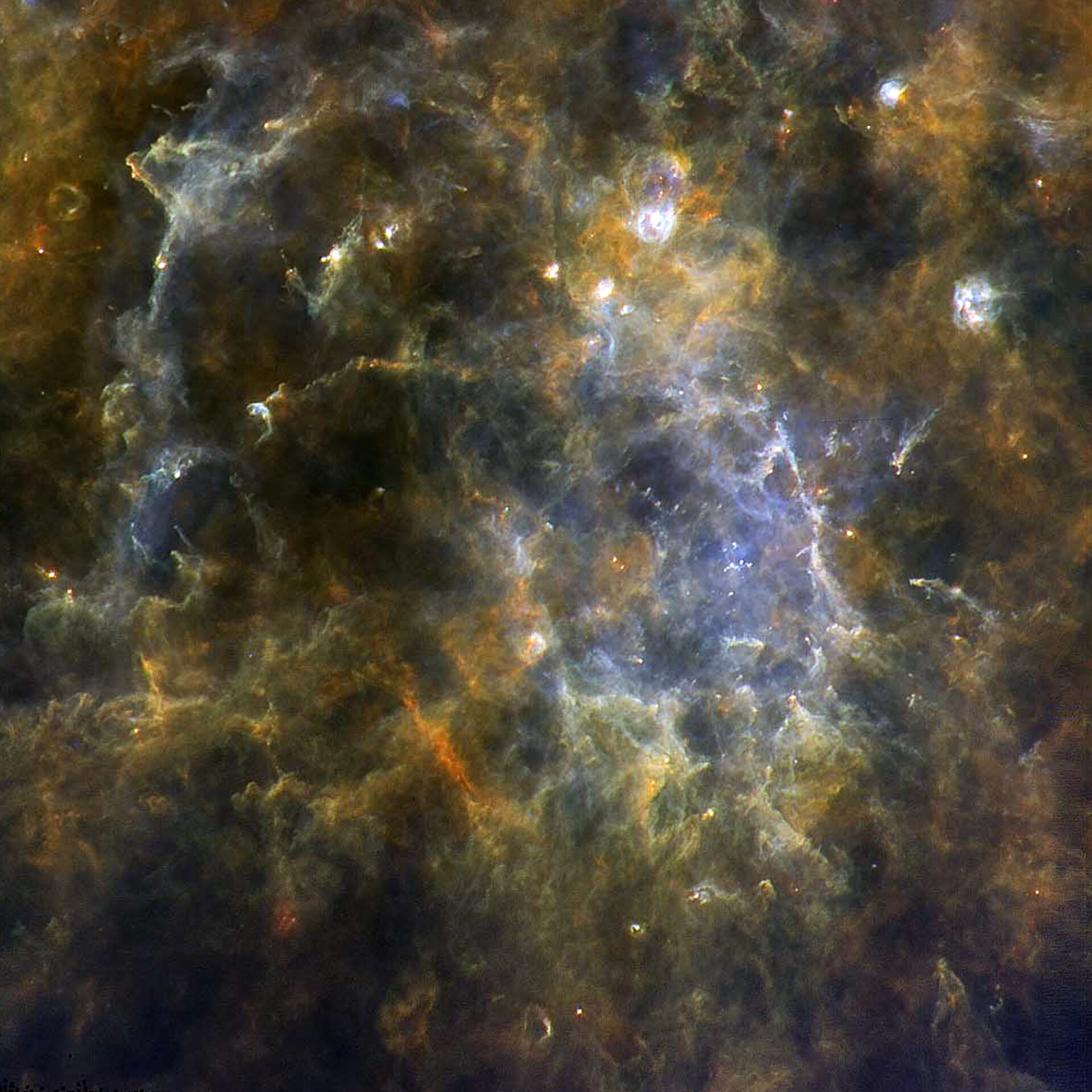
Chaotic web of filaments in a Milky Way stellar nursery
Thank you for liking
You have already liked this page, you can only like it once!
The plane of the Milky Way is rich in star-forming regions, such as the one pictured in this stunning scene by ESA’s Herschel space observatory. To the far-infrared eye of Herschel, this region reveals an intricate network of gas filaments and dark bubbles interspersed by bright hotspots where new stars come to life.
The cooler regions, which emit light at longer wavelengths, are displayed in a red-brownish colour. Hotter areas, where star formation is more intense, shine in blue and white tones. Some areas are particularly bright, suggesting a number of luminous, massive stars are forming there.
Particularly striking is the chaotic web of gas filaments we see in this scene. Astronomers think there is a link between star formation and the filamentary structures in the interstellar medium. In the densest strands, the gas that makes up the filaments becomes unstable and forms clumps of material bound together by gravity. If dense enough, these collapsed blobs of gas eventually go on to become newborn stars.
Observations by Herschel showed the filamentary complexity to be ubiquitous in the plane of our Galaxy, from a few to hundreds of light-years. In nearby star-forming clouds, within 1500 light-years of the Sun, these filaments seem to be roughly all the same width – about a third of a light-year. This suggests a common physical mechanism in their origin, possibly linked to the turbulent nature of interstellar gas clouds.
The star-formation region in this image, centred around –70º longitude in galactic coordinates, is located in the Carina neighbourhood, home to the glorious Carina Nebula. Located some 7500 light-years away, Carina is one of the largest clouds of gas and dust in the plane of the Milky Way. It hosts the famous Eta Carinae, one of the most luminous and massive stellar systems in our galaxy.
Herschel, which operated from 2009 until 2013, was a large space telescope observing in the far-infrared and submillimetre parts of the spectrum. This spectral range is ideal to observe the glow from cool dust in the regions where stars form. As part of Hi-GAL, the Herschel infrared Galactic Plane Survey, the observatory surveyed the plane of our Galaxy, exploring the Milky Way’s star-formation regions in unprecedented detail. This image, a product of Hi-GAL, combines observations at three different wavelengths: 70 microns (blue), 160 microns (green) and 250 microns (red).
-
CREDIT
ESA/Herschel/PACS, SPIRE/Hi-GAL Project. Acknowledgement: UNIMAP / L. Piazzo, La Sapienza - Università di Roma; E. Schisano / G. Li Causi, IAPS/INAF, Italy -
LICENCE
ESA Standard Licence
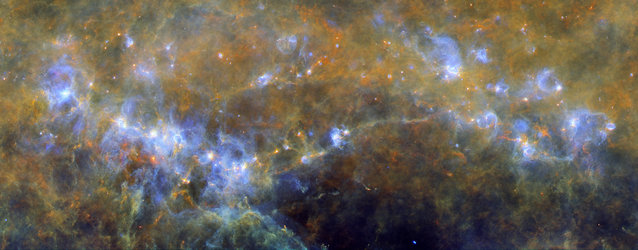
Star formation on filaments in RCW106
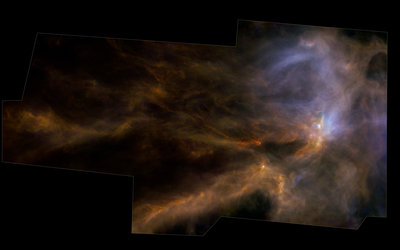
Herschel’s view of a star nursery
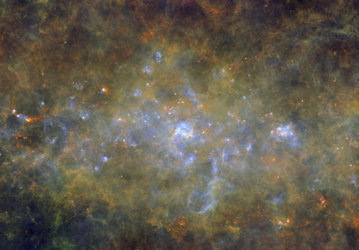
Intense star formation in the Westerhout 43 region
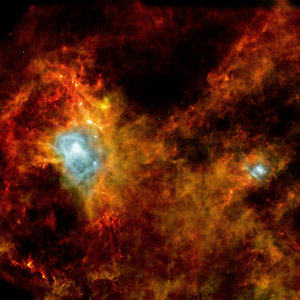
Inside the dark heart of the Eagle
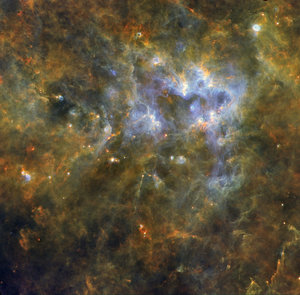














 Germany
Germany
 Austria
Austria
 Belgium
Belgium
 Denmark
Denmark
 Spain
Spain
 Estonia
Estonia
 Finland
Finland
 France
France
 Greece
Greece
 Hungary
Hungary
 Ireland
Ireland
 Italy
Italy
 Luxembourg
Luxembourg
 Norway
Norway
 The Netherlands
The Netherlands
 Poland
Poland
 Portugal
Portugal
 Czechia
Czechia
 Romania
Romania
 United Kingdom
United Kingdom
 Slovenia
Slovenia
 Sweden
Sweden
 Switzerland
Switzerland

























